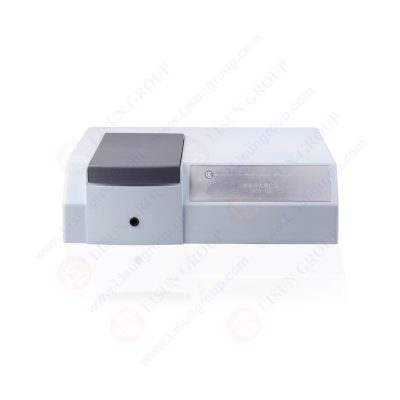
There are many different brands of color spectrophotometers on the market, and even within the same brand, there are multiple products available. The handheld and desktop types are the most popular categories, but what are the differences between these two types?
Portable Colorimeters – also known as Portable spectrophotometers
Can directly read data and connect to a computer through software: Small size, convenient to carry, high accuracy, and moderate price. Easy to operate, even ordinary personnel can easily handle it.
Desktop Colorimeters – also known as Benchtop Transmittance Spectrophotometer: Equipped with a reading window, used with color matching software when connected to a computer, has high accuracy color matching function, large size, stable function, and high price.
As we all know, Benchtop Transmittance Spectrophotometer are more accurate and consistent than portable devices. When using strict tolerances or setting color specifications, desktop devices are usually the preferred choice. Professionals working with brand colors or components of their products must match each other in the final assembly process, using desktop devices to set specifications, formulas, and quality control. On the other hand, portable colorimeters are more suitable for spot checking product quality as they are easy to carry around.
Portable VS Benchtop Spectrophotometers:
If you want to measure liquids such as orange juice, laundry detergent, or shampoo, please choose a Benchtop Transmittance Spectrophotometer; Benchtop Transmittance Spectrophotometer are also the preferred choice for setting color formulas. They are suitable for controlling fluorescence and fluorescent whitening agents in paper, textiles, plastics, pigments, and paints. Using automatic instrument settings eliminates the possibility of speculation and errors during instrument configuration.
Portable colorimeters are convenient to carry around and can be used for quality control in the laboratory. They are widely used in industries such as plastics, printing, and metal spraying for quality inspection and monitoring.
They are compact, handheld, simple, and inexpensive instruments, but still effective for specific purposes. In a Benchtop Transmittance Spectrophotometers, a specific light source (such as A or D65) illuminates the object. The reflected light passes through primary filters: red, green, and blue, which simulate the spectral sensitivity curve and reach the detector, where it provides a response proportional to the three-stimulus values. Therefore, colorimeters provide information about the amount of red, green, and blue light reflected by the object. This color information is useful for color evaluation that does not require complexity or accuracy. For example, colorimeters are very useful in production environments where measuring color differences between products and standards, or between production batches, is important. It can also be compared to color charts for evaluation purposes.
Benchtop Transmittance Spectrophotometers are more complex and accurate color evaluation devices than colorimeters. They are used for color quality control in processes that require higher accuracy, such as research labs, color formulas in paint and cosmetics companies, etc. Spectrophotometers can be handheld, with a compact and user-friendly design, suitable for industrial environments on the product line. Or they can be desktop spectrophotometers that require a more comprehensive understanding of the user, but offer greater versatility. Generally, handheld spectrophotometers or handheld measurements are used to measure opaque solid objects, while desktop spectrophotometers can be used to measure the color of opaque solids, semi-transparent solids, and liquids.
DSCD-910_Benchtop Spectrophotometer (Transmittance)
Benchtop Transmittance Spectrophotometers used for color evaluation measure the reflection or transmission radiation of the entire visible spectrum. To do this, a monochromatic radiation is used to illuminate the sample or object (spectrophotometers have monochromators, filters, or prisms that can distinguish wavelengths), and the amount of reflected or transmitted radiation is recorded.
Benchtop Transmittance Spectrophotometers are very common instruments used in color measurement. They are widely used in areas such as color evaluation, color control, color matching, and material composition analysis. As a precision instrument for color measurement, its working principle is to use a spectrophotometer to display the ratio of the spectral composition and diffraction curve of a graph and calculate the measured value accordingly. It automatically records the data measured by the spectrophotometer, and then calculates the measurement result automatically. In addition to the microprocessor and related circuits, the spectrophotometer has four main components: light source, integrating sphere, grating (monochromator), and photodetector. Different models of spectrophotometers have different components, which affect the accuracy of the measurement results.
Spectrophotometers, as precise measurement instruments, have a unique measurement method that is not complicated. It mainly consists of four steps:
1. Calibration
In actual use, calibration is required to ensure accuracy. There are two calibration methods: one is to use standard samples to calibrate, and the other is to use raw data from the light source for calibration. Calibration can ensure that the spectrophotometer has consistent standards under different test conditions.
2. Sampling
Before testing, a sample of the object needs to be taken. This step usually requires taking a small piece from the surface of the object while avoiding contamination and damage to the sample surface as much as possible.
3. Measurement
Before measuring, the sample needs to be fixed on the spectrophotometer according to the requirements. Then, using the instrument’s built-in operating interface, input the required measurement items and illuminate the sample with the light source. After a certain test time, the test data is recorded.
4. Analysis and Results
After obtaining the measurement data, it is necessary to perform analysis and statistics and further processing based on the analysis results. For example, by calculating the color difference value, the level of color difference from the standard sample can be determined, thereby determining the color accuracy.
As a highly precise color inspection device, spectrophotometers can detect the “reflectivity curve” of each color point, which cannot be achieved by many simple color difference meters. In addition, spectrophotometers can simulate multiple light sources, allowing you to perform color difference calibration work in the designated light source box specified by the inspection company.
https://www.lisungroup.com/news/technology-news/choosing-the-right-color-measurement-device-portable-vs-benchtop-spectrophotometers-benchtop-transmittance-spectrophotometer.html
.jpg)
Comments
Post a Comment